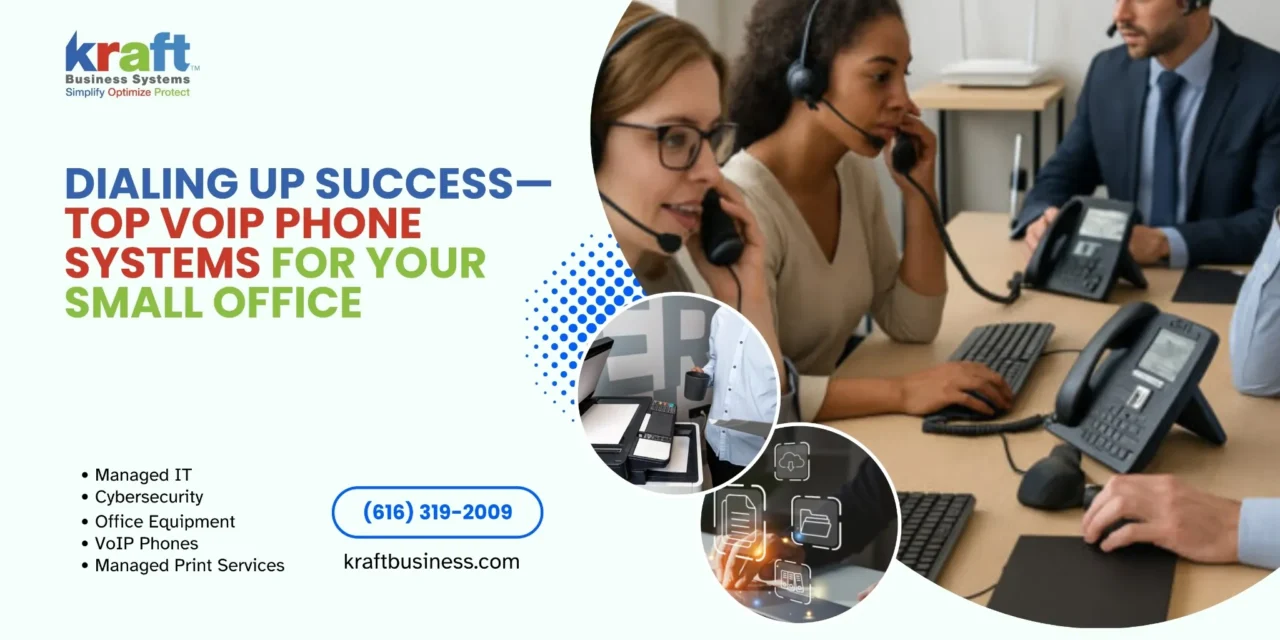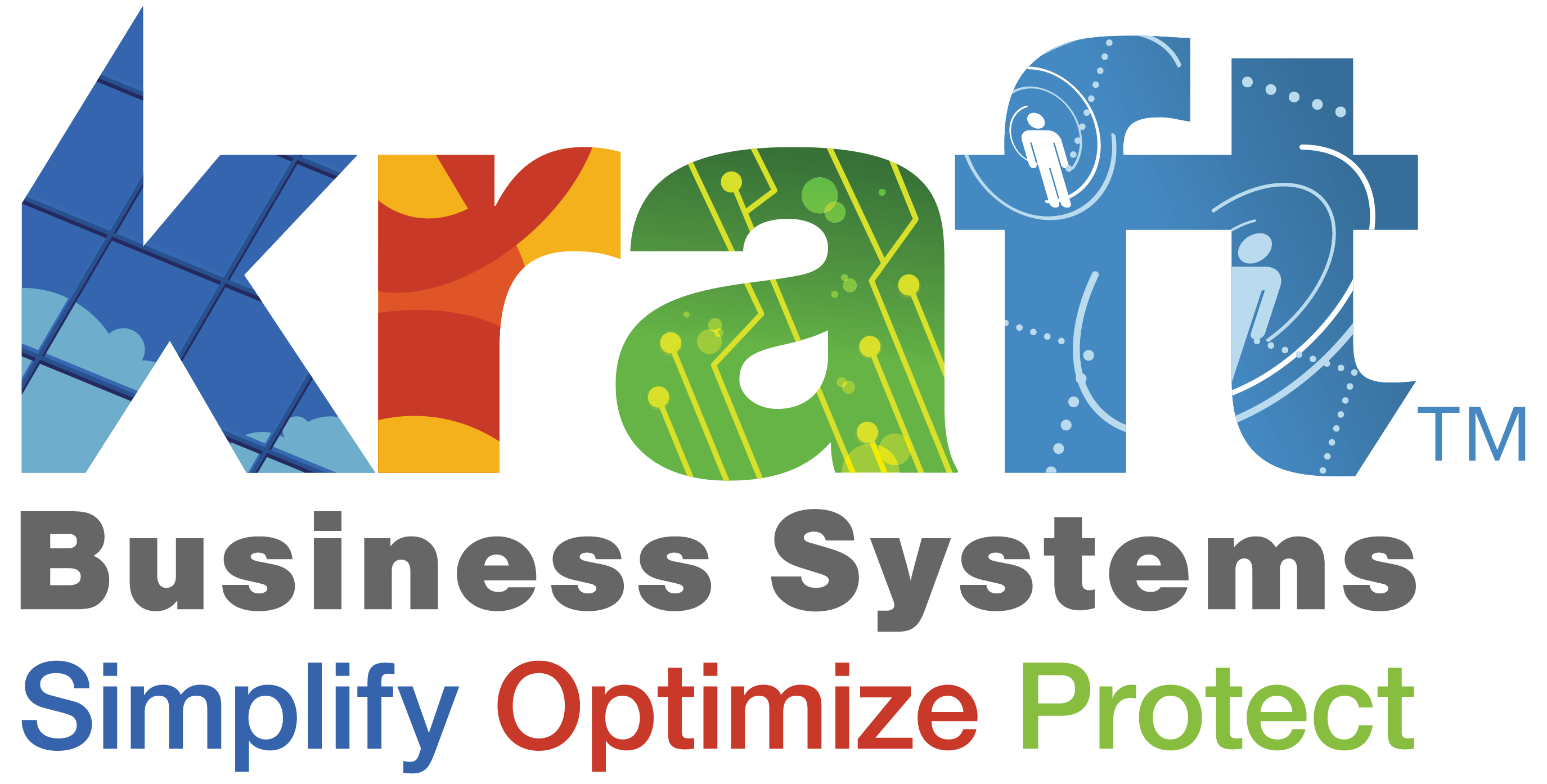A VoIP phone system for small office environments is changing how businesses communicate. Voice over Internet Protocol (VoIP) uses your internet connection to make and receive calls instead of traditional phone lines.
Top VoIP Phone Systems for Small Offices:
• All-in-One Suites – Unified communications with video, messaging, and analytics
• Budget-Friendly Packages – Basic calling features with mobile apps and voicemail
• Hardware-Focused Bundles – Physical desk phones with advanced features
• Power User Configurations – Call center tools with recording and reporting
The benefits are compelling. Small businesses can save up to 60% on monthly phone costs compared to traditional landlines. VoIP systems offer features like auto-attendants, call forwarding, and mobile apps that let your team work from anywhere.
Scalability makes VoIP especially attractive for growing offices. Adding new users takes minutes, not weeks of installation work. You can start with basic calling and expand to include video conferencing, team messaging, and CRM integration as your needs evolve.
Security and reliability have improved dramatically. Modern VoIP systems use encryption and redundant data centers to protect your calls and ensure uptime.
As one Reddit user noted: “I personally have about 6 phone numbers… Nextiva does not charge extra” – highlighting how VoIP providers often include features that traditional carriers charge extra for.
Why Switch to VoIP? Key Benefits for Small Offices
Making the switch to internet-based calling transforms how small offices operate. We’ve helped businesses across Grand Rapids, Ann Arbor, and throughout Michigan find what makes VoIP phone systems for small office environments so compelling.
HD audio quality immediately catches people’s attention. Digital voice transmission delivers conversations so clear that clients notice the difference. Gone are the days of asking “Can you repeat that?” because of crackling landlines or static during important calls.
The remote work revolution has made VoIP essential rather than optional. Your team member working from Traverse City can answer your main business number seamlessly, while someone in Detroit handles customer calls from their smartphone. The system treats every device like it’s sitting right on your office desk.
Unified communications brings everything under one roof. Voice calls, video meetings, instant messaging, and file sharing all work together instead of forcing your team to juggle different apps. We’ve watched small offices become dramatically more efficient when communication gets simplified.
The financial impact hits fast. Small businesses typically save 50-70% compared to traditional phone bills. That’s real money staying in your business instead of disappearing into monthly service charges.
Analytics and insights give you data that landlines never could provide. Track which hours are busiest, see how quickly calls get answered, and understand calling patterns. These insights help small offices make smart staffing decisions and improve customer service.
Environmental benefits matter more than many realize. VoIP systems need less physical infrastructure and eliminate miles of copper wiring. It’s a simple way to reduce your environmental footprint while improving your communication.
Business continuity happens automatically. Power outage at your Lansing office? Calls instantly route to mobile devices or backup locations. Unexpected events won’t disconnect you from customers who need to reach you.
The eco-friendly nature of VoIP extends beyond reduced infrastructure. Less energy consumption and fewer physical components make it a responsible choice for environmentally conscious businesses.
For a deeper understanding of how VoIP can benefit your specific situation, explore our comprehensive Business Owner’s Guide to Voice Over Internet Protocol.
VoIP vs Landlines—The Numbers
| Feature | Traditional Landlines | VoIP Systems |
|---|---|---|
| Monthly Cost per Line | $40-50 | $15-30 |
| Setup Time | 2-4 weeks | Same day |
| Mobile Integration | None | Full integration |
| Video Conferencing | Separate service | Built-in |
| Auto Attendant | Extra cost | Included |
| Call Recording | Not available | Standard feature |
| Scalability | Hardware dependent | Instant |
| International Calling | High per-minute rates | Often unlimited |
How Does a VoIP Phone System for Small Office Work?
Understanding the technology helps you make smarter decisions. VoIP converts your voice into data packets that travel over the internet, just like emails or website visits. These packets reassemble at their destination to recreate your voice with remarkable clarity.
Hosted PBX systems eliminate expensive equipment from your office. Your phone system lives in secure data centers with backup power and redundant internet connections. This setup provides better reliability than most small offices could achieve on their own.
SIP accounts work like digital phone lines. Each team member gets a unique account that functions on desk phones, computers, or mobile devices. Someone in Flint can answer business calls while visiting a client in Wyoming, Michigan, and nobody knows the difference.
Softphone applications transform any internet-connected device into a business phone. Install the app on a laptop, tablet, or smartphone, and it becomes part of your office system. Remote workers get identical features to colleagues sitting at office desks.
Router and network integration requires some planning but isn’t complicated. Your existing internet handles voice traffic alongside regular data. Quality of Service settings prioritize voice packets to maintain crystal-clear calls even when your network gets busy with other activities.
Choosing the Right VoIP Phone System for Your Small Office
Selecting the perfect VoIP phone system for small office use requires evaluating several key factors. We’ve helped businesses across Michigan steer these decisions, and certain considerations consistently matter most.
Bandwidth Requirements form the foundation. Each concurrent call needs approximately 100 kbps of bandwidth. A 5-person office making simultaneous calls requires at least 500 kbps dedicated to voice traffic. Factor in data usage, video calls, and growth projections when calculating needs.
Security and Encryption protect sensitive conversations. Look for systems offering TLS (Transport Layer Security) for signaling and SRTP (Secure Real-time Transport Protocol) for voice data. These protocols ensure that customer conversations remain private and secure.
Scalability Planning prevents future headaches. Choose systems that grow with your business. Adding users should be simple and cost-effective. Some solutions support hundreds of users, while others cap at specific limits.
Remote Onboarding capabilities matter more than ever. New employees should be able to join the phone system from anywhere. Cloud-based systems excel here, allowing instant provisioning of new accounts and features.
Warranty and Support become critical when problems arise. Look for providers offering 24/7 technical support and clear escalation procedures. Downtime costs money and frustrates customers.
Our Cloud-Based VoIP guide explores these considerations in greater detail, helping you make informed decisions.
Must-Have Features in a VoIP Phone System for Small Office
Auto Attendant functionality creates professional first impressions. Callers hear customized greetings and can route themselves to appropriate departments. Even solo entrepreneurs can sound like established enterprises with proper auto attendant setup.
Call Queues manage high-volume periods gracefully. When all team members are busy, incoming calls wait in an organized queue with hold music and periodic announcements. Customers appreciate knowing their position and estimated wait times.
Voicemail-to-Email integration ensures no message goes unnoticed. Voicemails arrive in email inboxes as audio attachments, often with transcriptions. Team members can review messages anywhere, anytime.
SMS Capabilities add another communication channel. Customers can text your business number, and responses come from the same unified platform. This feature proves especially valuable for appointment confirmations and quick status updates.
Mobile Applications extend your office phone system everywhere. The mobile app on a smartphone in Traverse City functions identically to a desk phone in Sterling Heights. Call forwarding, transfer, and conference features work seamlessly across devices.
Hidden Costs & How to Avoid Them
Hardware Rental Fees can accumulate quickly. Some providers charge monthly rental fees for desk phones that exceed the purchase price within a year. Calculate total ownership costs over your expected usage period.
Number Porting Charges vary significantly between providers. Moving existing phone numbers to a new system sometimes incurs per-number fees. Factor these one-time costs into your budget planning.
International Calling Minutes often carry premium rates. If your business regularly calls overseas, verify international calling plans and per-minute charges. Some providers include specific countries in unlimited plans.
E911 Service Fees ensure emergency services can locate callers. Most providers charge monthly fees for Improved 911 services. This critical safety feature is worth the cost but should be included in budget calculations.
Top VoIP Phone System Options for Small Offices
Finding the right VoIP phone system for small office environments means understanding your team’s unique communication style. Some businesses thrive with traditional desk phones, while others accept the flexibility of mobile-first solutions.
Desk phones still hold their ground in many professional settings. There’s something reassuring about a physical handset for important client calls, and receptionists often prefer the tactile feedback of dedicated hardware. Modern VoIP desk phones pack impressive technology into familiar designs, featuring color touchscreens and programmable buttons that would make your old office phone jealous.
Softphone solutions represent the future for many small businesses. Why buy hardware when your laptop, tablet, or smartphone can handle everything? These software-based phones work brilliantly for remote teams and businesses that value mobility over desk-bound traditions.
Cloud platforms handle the technical heavy lifting while you focus on running your business. Everything happens in secure data centers with redundant connections and professional management. It’s like having an IT department without the overhead costs.
Hybrid setups offer the best of both worlds when you can’t choose between cloud convenience and on-site control. Maybe you need certain calls to stay local for compliance reasons, but want cloud flexibility for everything else. These systems bend to accommodate your specific requirements.
Best All-in-One Unified Suite—Ideal for Growing Teams
When your business needs more than basic phone service, comprehensive platforms shine. These VoIP phone systems for small office teams combine voice calls, video meetings, instant messaging, and file sharing into one powerful package.
AI-powered features are becoming surprisingly practical rather than just flashy marketing terms. Automatic call transcription means you’ll never miss important details from client conversations. Smart routing analyzes incoming calls and directs them to team members with the right expertise and availability.
Video meeting integration eliminates the juggling act between different communication tools. Host client presentations in the morning, conduct team meetings after lunch, and handle training sessions in the evening—all within the same platform that manages your daily phone calls. Screen sharing and recording capabilities rival dedicated video conferencing services.
Advanced analytics transform raw call data into actionable business insights. Find your busiest calling hours, track response times, and identify patterns that help optimize staffing decisions. These detailed reports often reveal surprising trends about customer behavior and team performance.
Most comprehensive suites support video meetings with 25-100 participants, include unlimited domestic calling, and bundle advanced features like call recording and CRM integration as standard components rather than expensive add-ons.
Budget-Friendly Entry Package—Perfect for Solo Entrepreneurs
Starting small doesn’t mean settling for amateur-looking communication tools. Streamlined solutions focus on essential features that solo entrepreneurs and micro-businesses need to project professional credibility.
Virtual phone numbers create instant business presence without requiring physical office space. Customers dial what appears to be a local business line, but calls actually ring on your mobile device. You can even maintain separate virtual numbers for different business lines or geographic markets.
Unlimited domestic calling removes the stress of monitoring usage and worrying about surprise charges. Make and receive calls throughout the United States and Canada without calculating per-minute costs or setting artificial limits on important conversations.
Mobile app functionality transforms your smartphone into a complete business communication center. Answer calls using your business number, transfer conversations to colleagues, and access voicemail from anywhere. The mobile experience delivers the same professional capabilities as expensive desk phones.
Voicemail transcription converts audio messages into readable text, allowing quick review without listening to lengthy recordings. This feature proves invaluable during meetings or situations where playing audio isn’t appropriate.
Hardware-Focused Bundle—For Offices Needing Physical Handsets
Some work environments simply function better with traditional desk phones. Reception areas, conference rooms, and employee workstations often benefit from dedicated hardware that provides familiar interfaces and reliable performance.
Dual gigabit ethernet ports simplify network connections by allowing desk phones to share network access with computers. This design reduces the number of network cables and switch ports required, particularly helpful in offices with limited networking infrastructure.
WiFi-enabled desk phones offer placement flexibility without ethernet cable constraints. Position phones anywhere within WiFi coverage, perfect for temporary workstations or areas where running network cables proves impractical or expensive.
Power over Ethernet capabilities eliminate separate power adapters and reduce cord clutter. When your network switch supports PoE, it powers desk phones through the same cables carrying voice data, simplifying installations and reducing electrical outlet requirements.
Expansion modules add programmable buttons for busy receptionists or power users who need quick access to frequently dialed numbers. These modules can support up to 20 additional buttons per phone, each representing speed dials, department extensions, or commonly used features.
Modern VoIP desk phones include color displays, Bluetooth connectivity for wireless headsets, and USB ports for call recording devices or mobile phone charging.
Power User Configuration—For Call-Intensive Support Desks
High-volume calling environments demand robust features and detailed monitoring capabilities. These VoIP phone systems for small office call centers and support teams provide enterprise-grade functionality without enterprise-level complexity.
Call recording captures every conversation for training, compliance, and quality assurance purposes. Automatic recording ensures important details never get lost, while on-demand recording provides flexibility for sensitive situations that require special handling.
Multi-level IVR systems route callers efficiently through sophisticated menu structures. Customers can self-serve for common requests like account balances or store hours, while complex technical issues reach appropriate specialists immediately. Well-designed phone trees reduce wait times and improve customer satisfaction.
Real-time wallboards display live call statistics and queue information on large monitors visible throughout the office. Managers can monitor call volumes, wait times, and agent availability at a glance, helping optimize staffing levels and identify potential problems before they impact customer experience.
SLA reporting tracks service level agreements and performance metrics with detailed accuracy. Generate comprehensive reports showing response times, resolution rates, and customer satisfaction scores. These insights drive continuous improvement initiatives and help justify staffing decisions to upper management.
Advanced configurations often include call whisper coaching for real-time agent guidance, barge-in capabilities for supervisor intervention, and sophisticated routing rules based on caller history or agent expertise levels.
Setting Up, Securing & Integrating Your New System
Getting your new VoIP phone system for small office up and running doesn’t require an IT degree or expensive consultants. We’ve walked countless Grand Rapids businesses through this process, and most find it surprisingly straightforward.
DIY installation handles the majority of setups perfectly well. Cloud-based systems are designed with simplicity in mind. You’ll typically access a web portal, follow step-by-step guides, and watch your system come to life. The days of waiting weeks for technician visits are behind us.
Your internet connection does the heavy lifting, but it needs proper guidance. Quality of Service (QoS) settings tell your router that phone calls matter more than someone’s YouTube video. Think of it as a traffic cop directing the most important vehicles to the express lane. Configure these settings correctly, and your calls stay crystal clear even when the office network gets busy.
Encryption configuration keeps your conversations private. Modern systems use TLS encryption for call setup and SRTP encryption for the actual voice data. These technical terms simply mean that eavesdroppers can’t intercept your customer calls or internal discussions.
Firewall considerations require some balance. You want security without blocking legitimate phone traffic. VoIP systems need specific network ports open to function properly. Most providers offer detailed guides showing exactly which ports to configure.
The real magic happens when you connect your phone system to other business tools. CRM integration means customer information pops up automatically when they call. No more scrambling to find account details while someone waits on hold. API integration connects your phone system to help desk software, scheduling tools, or billing platforms, creating seamless workflows that save time and reduce errors.
Our comprehensive Business Hosted Voice guide covers these integration possibilities in detail, helping you maximize your investment.
Step-by-Step Small Office Deployment Checklist
Start with a network assessment that tells you if your internet connection can handle the load. Each person making simultaneous calls needs about 100 kbps of bandwidth. A five-person office might need 500 kbps just for voice traffic, plus whatever you use for email, web browsing, and file sharing.
Modem and router configuration sets the foundation for everything else. Update your router’s firmware first – manufacturers regularly fix bugs and improve performance. Then configure those QoS settings we mentioned earlier. Your VoIP phone system for small office will thank you with consistently clear calls.
Account setup and user provisioning creates the digital framework for your team. Each person gets their own user account with a unique extension number. Set up basic features like voicemail greetings and call forwarding rules during this phase. It’s easier to configure everything upfront than to adjust settings later when people are busy.
Handset provisioning connects physical phones to your cloud system. Modern VoIP phones are surprisingly smart – plug them into your network, enter a few configuration details, and they download their settings automatically. It feels almost magical watching a phone transform from a paperweight into a fully functional business tool.
Test calls and feature verification prove everything works before you go live. Make calls between extensions, test external calling both ways, and verify that voicemail actually records messages. Try transferring calls and using the auto attendant. Better to find problems during testing than during your first important client call.
Training and documentation ensure smooth adoption across your team. Show everyone how to transfer calls, access voicemail from their mobile devices, and use the features that matter most. Create simple reference guides for common tasks. People adapt faster when they feel confident using new tools.
Keeping Conversations Safe: VoIP Security Essentials
Strong password policies protect your system from unauthorized access. Change every default password immediately – hackers know these defaults and actively scan for systems using them. Use complex passwords for administrative accounts and enable two-factor authentication whenever possible. That extra step prevents most security breaches.
Network segmentation creates separate highways for voice and data traffic. Set up VLANs that isolate your phone system from other network activity. This approach improves both performance and security by preventing unauthorized access to voice communications.
Regular security updates matter more than most people realize. Keep your phone system software current with security patches. Update desk phone firmware when manufacturers release new versions. Monitor vendor security bulletins – they’ll alert you to important updates that protect against emerging threats.
Compliance considerations become critical for certain industries. Healthcare organizations need HIPAA-compliant VoIP solutions that protect patient information. Financial services face specific security standards that affect system selection. Verify that your chosen system meets any industry-specific requirements that apply to your business.
Security doesn’t have to be complicated, but it does need to be consistent. Think of it like locking your office door each night – simple habits that protect valuable assets. Your customer conversations and business communications deserve the same level of protection you’d give any other valuable business asset.
Frequently Asked Questions about Small Office VoIP
What internet speed is required for a VoIP phone system for small office?
Your internet connection forms the backbone of any VoIP phone system for small office setup. Each active call uses roughly 100 kbps of bandwidth to maintain crystal-clear audio quality. If you have five team members who might all be on calls simultaneously, you’ll want at least 500 kbps reserved just for voice traffic.
Here’s the catch that many businesses miss: upload speed matters just as much as download speed. Traditional residential internet often provides much faster downloads than uploads, which can create frustrating call quality issues. Your voice needs to travel both directions smoothly.
We always recommend securing 50% more bandwidth than your calculated minimum. Network overhead, quality fluctuations, and that colleague who decides to stream training videos during peak call times all impact performance. Business-grade internet connections typically deliver more consistent results than residential services, though they cost a bit more.
Think about growth too. That three-person office might become six people within a year. Planning ahead prevents scrambling for bandwidth upgrades when you’re busiest.
Can I keep my existing phone numbers when switching?
Absolutely! Number porting lets you bring those valuable phone numbers with you to your new system. Customers won’t need to update their contact lists, and you won’t lose calls during the transition.
The process typically takes 1-3 business days for local numbers. Toll-free numbers can take up to 10 business days, so plan accordingly if you rely heavily on that 800 number for customer calls.
Before starting, gather your current provider’s account information. You’ll need account numbers, the exact billing address, and contact details for whoever’s authorized to make changes. Don’t cancel your existing service until the porting process completes successfully – that’s a mistake that can leave you phoneless for days.
Some providers charge porting fees while others include it free. Ask upfront so there are no surprises on your first bill.
How scalable is a VoIP solution as my team grows?
This is where VoIP phone systems for small office environments really shine. Adding new team members takes just minutes through your web-based control panel. No waiting weeks for phone company technicians or buying expensive hardware.
Most cloud-based systems support hundreds or even thousands of users without breaking a sweat. Whether you’re growing from 3 to 30 people or planning for even bigger expansion, the system adapts seamlessly.
The financial side scales beautifully too. Adding one person typically means paying one additional user license fee. No installation charges, no equipment purchases, no complex calculations. You can add someone in the morning and have them taking calls by lunch.
This flexibility proves invaluable for businesses that can’t predict future needs. Seasonal fluctuations, project-based hiring, or unexpected growth spurts all become manageable when your phone system grows instantly with your team.
Conclusion
Switching to a VoIP phone system for small office use isn’t just about cutting costs—it’s about open uping your business’s potential. The change goes far beyond replacing old desk phones with shiny new technology.
Your team becomes more productive when they can seamlessly communicate from the coffee shop, home office, or client site. Customers notice the difference when calls reach the right person quickly and their information is already on screen when they call.
The financial benefits speak for themselves. Most small businesses pocket thousands of dollars annually by making the switch. That money stays in your business instead of disappearing into monthly phone bills that seem to grow every year.
We’ve watched businesses across Michigan transform their operations with the right communication tools. A small accounting firm in Ann Arbor can now serve clients professionally from anywhere. A growing consulting company in Detroit scales their team without worrying about phone system limitations.
The technology keeps getting better too. Features that cost thousands just a few years ago now come standard. AI helps route calls smarter. Analytics reveal patterns that help you serve customers better. Integration connects everything your business uses into one smooth experience.
Getting started doesn’t have to be overwhelming. The right partner makes all the difference between a smooth transition and a frustrating experience. At Kraft Business Systems, we’ve guided hundreds of businesses through this journey. Our team understands the unique challenges small offices face.
Every business has different needs. Some prioritize mobility. Others need rock-solid reliability. Many want room to grow without starting over. The perfect solution exists for your specific situation.
For broader technology guidance that goes beyond communication systems, check out our Small Business Technology Services to see how the right technology stack supports your growth.
Ready to leave outdated phone systems behind? Our consultants and industry experts create solutions that fit your business like a glove. Explore custom VoIP solutions designed around your unique needs and growth plans.
Whether your office is in Grand Rapids, Kalamazoo, or anywhere across Michigan, we’re here to help you dial up success with communication tools that actually work for your business.











